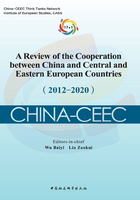
Chapter 1 Contribution of China-CEEC Cooperation to Promoting Regional Cooperation
China-CEEC Cooperation is a cross-regional cooperation mechanism jointly designed and advanced by China and CEECs in light of their circumstances and needs. It is defined as cross-regional for two reasons. Firstly, it encompasses different parts of Central and Eastern Europe and different parts of Europe. Central and eastern Europe itself is much diversified, instead of being a monolithic geographical concept. It includes four Central European countries (Poland, Hungary, the Czech Republic, Slovakia), 10 Southeastern European countries (Romania, Bulgaria, Slovenia, Croatia, Serbia, Montenegro, Bosnia and Herzegovina, North Macedonia, Albania, Greece) and three Baltic states (Estonia, Latvia, Lithuania). In the meantime, EU and non-EU member states can be seen as different parts of Europe, and therefore making the format cross-regional. Secondly, with China at one end of the equation, and CEECs at the other end, China-CEEC Cooperation is a format of cooperation between an Asian country and a group of European Countries, separated by a number of Eurasian countries in the middle.
Despite the many differences among the 16 CEECs (Greece not included), there are similar identities and features, which have made China-CEEC Cooperation possible. All 16 CEECs are actors in transition (going through a process of coming back to Europe after the Cold War), emerging economies (with new features of economic growth compared with the countries of the old Europe) and new EU member states (which joined the EU during the fourth and fifth rounds of enlargement as well as EU candidates). Economic growth and part of the industrial chain of these countries are, to some extent, dependent on the old Europe. Located between the central-eastern and southeastern parts of Europe, these countries are well-positioned to be a geographical hub.[1]